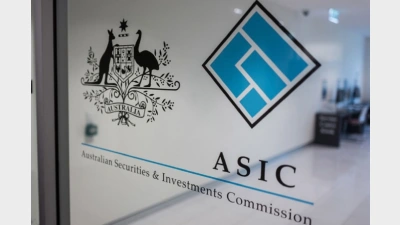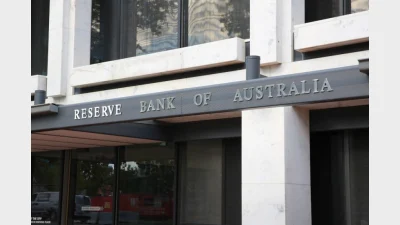(June-2003) Hedge fund traffic runs yellow light
When the Australian Prudential Regulation Authority (APRA) warned super funds about its concerns regarding their use of hedge funds as an investment choice in early March, it caused considerable consternation but failed to significantly curb the superannuation industry’s appetite for hedge funds.
Not only are an increasing number of super funds pursuing the hedge funds option, some funds are openly discussing the prospects of boosting their exposure.
While no super fund has yet exceeded a 5 per cent allocation to hedge funds, there is a general acknowledgement that it is only a matter of time before the level rises, particularly with respect to fund of hedge funds.
The strategy approach being adopted by most superannuation funds, particularly in the wake of the APRA warning, is to generally avoid a single manager hedge funds approach and to pursue multi-manager vehicles.
The common reason stated by fund managers is that by allocating assets among managers, they will effectively reduce the risk of a single manager and combine different investment strategies and techniques with the objective of reducing volatility and enhancing portfolio returns.
The most common argument put to super fund trustees is that hedge funds offer trustees and other investors the potential for greater diversification in asset classes along with low or negative correlation with existing investments.
The funds argue that this has been very helpful to overall returns in an environment when both global and Australian equities have experienced large negative returns.
According to Commonwealth Superannuation Scheme (CSS) CEO Steve Gibbs, fund of hedge funds currently represent about 2 per cent of his fund’s asset allocation, within a strategic cap of 5 per cent.
Gibbs says CSS adopts an initially highly cautious approach involving 12 months of research and due diligence before it puts its toe in the water with a 1 per cent allocation.
However, he now believes that decision has been vindicated with the hedge funds having “delivered absolute returns over anything we might have received out of equity investments”.
Gibbs says APRA’s March warning on hedge fund investments had caused some initial concern, but CSS is satisfied that it has carried out the necessary due diligence and that its strategy is sound.
Super fund executives and most investment advisors say they understand and accept the reasoning behind APRA’s very public warning, but many in the hedge fund sector have been less forgiving.
Having worked hard to get hedge funds accepted as a legitimate asset class for super funds, the hedge fund managers are less than impressed by the suggestions contained in the APRA statement, not least its broadly negative headline: “APRA alerts super industry to the drawbacks of hedge funds”.
In a statement, APRA general manager Wayne Byres noted that hedge funds were growing in popularity because they ostensibly offered the potential for greater diversification in asset classes and absolute returns for less risk at a time when market returns were down.
“What is becoming obvious, however, is that while some hedge funds are professionally managed and regulated, they can still lead to significant losses in a relatively short space of time, particularly where gearing is used,” he said.
“Events in the late 1990s have shown that even the most carefully constructed investment strategies are not fool-proof and significant losses can be generated in a relatively short space of time where large, illiquid positions are involved.”
APRA’s main concerns are that hedge funds rely heavily on a single strategy, with broad delegations for the use of gearing and derivatives, and on a single individual to execute the investment management process. They are characterised by a relatively short trading history and/or an absolute return rather than a benchmark return.
The APRA statement prompted a rush of phone calls and correspondence from both hedge funds and superannuation funds to APRA, which eventually led APRA to attempt to clarify its position last month.
At the same time as announcing that APRA had asked selected super fund trustees to report on how much they had invested in hedge funds, Byres denied that the regulator was suggesting hedge funds were an inappropriate investment option.
Byres said APRA’s main concerns are that hedge funds have historically been investment vehicles targeted to professional investors in the retail market searching for higher risk/return and are not necessarily designed to accommodate the prudential and other regulatory requirements relating to superannuation.
He added: “Despite either ill-informed or deliberately deceptive comments coming from some members of the hedge fund industry, APRA did not say that trustees should not invest superannuation monies into hedge funds.”
One of the hedge fund managers to express concern about the APRA statement was a pioneer of retail hedge funds in Australia, Hedge Funds of Australia managing director Spencer Young.
Young suggests that APRA had “shot from the hip and got it wrong”.
Despite the APRA statement, he says there has been no slackening in interest from super funds, with every indication that there is likely to be a growth in asset allocations directed towards hedge funds.
However, he acknowledges that super funds are taking a cautious stance towards hedge funds and are seeking out the more conservative fund-of-funds approach.
Deutche Asset Management’s Glenn Poswell says he also found the APRA statement surprising and “a little alarmist”, but adds that it has not resulted in any slackening in enquiries from super funds or in the impetus that has already been generated.
“We are seeing a lot of traction in the market and the level of understanding is good,” he says.
Poswell, however, does not see the level of asset allocation towards hedge funds breaking through the 5 per cent barrier in the short-term, although he expects that super funds will increasingly meet the full 5 per cent allocation rather than hovering at around 2 or 3 per cent.
He expects the allocation to get to 5 per cent because the general investment outlook remains clouded.
Poswell points out that absolute return strategies are different to traditional investments in that their goal is to produce positive returns in a variety of market conditions and that they do not relate their performance to any index or benchmark.
Instead, they are concerned with producing attractive returns over time (positive returns regardless of market direction).
Poswell notes that while returns from hedge funds in the current environment are not necessarily going to “blow the lights out”, they are going to generate sound earnings.
However, BT Financial Group’s Richard Keary brings a different perspective to the debate, arguing that it is dangerous to focus on hedge funds alone in terms of examining alternative investments.
“The debate is not served by being limited to hedge funds when there are other forms of alternative investment such as commodities or private equity,” he says.
Looking specifically at hedge funds, however, he notes that there is a need to err on the side of caution and that while asset allocations to alternative investments might be 5 per cent, hedge funds might only be a part of that.
The response of asset consultants and trustees to the APRA statement is somewhat more benevolent with most acknowledging that while hedge funds represent an appropriate part of any diversification strategy, an element of caution is warranted.
Frontier Investment Consulting’s Fiona Trafford-Walker says her company supports hedge funds as a source of diversification for super funds but acknowledges that APRA has been right to raise the issues it has.
“If you are going to go into this you have to do your due diligence because hedge funds certainly aren’t for everyone,” she says.
However, Trafford-Walker adds that in the existing environment, hedge funds have tended to do well, generating returns on capital when markets are not otherwise robust.
Paul Laband, the national head of Towers Perrin’s asset consulting practice, says it has been very clear over the past two years that a rising number of super funds have begun making hedge fund investments a part of their allocation strategies. “We have supported that investment on the basis of diversification.”
However, he says a distinction needs to be drawn between hedge funds as a separate asset class and a separate asset style.
Laband says while a 5 per cent allocation seems appropriate and prudent, he believes that the allocation will probably grow beyond that figure over time.
He regards APRA’s statement as a warning to super funds to be rigorous in their assessment of hedge funds and to do their homework. But he adds that there is very clearly a future for hedge funds as an asset allocation tied up with the prevailing structural environment.
Recommended for you
The structural shift towards active ETFs will reshape the asset management industry, according to McKinsey, and financial advisers will be a key group for managers to focus their distribution.
ASIC has warned that practices across the $200 billion private credit market are inconsistent and, in some cases, require serious improvement.
A surge in electricity prices has driven the monthly Consumer Price Index to its highest level in a year, exceeding forecasts.
Infrastructure well-positioned to hedge against global uncertainty, says investment chief.







